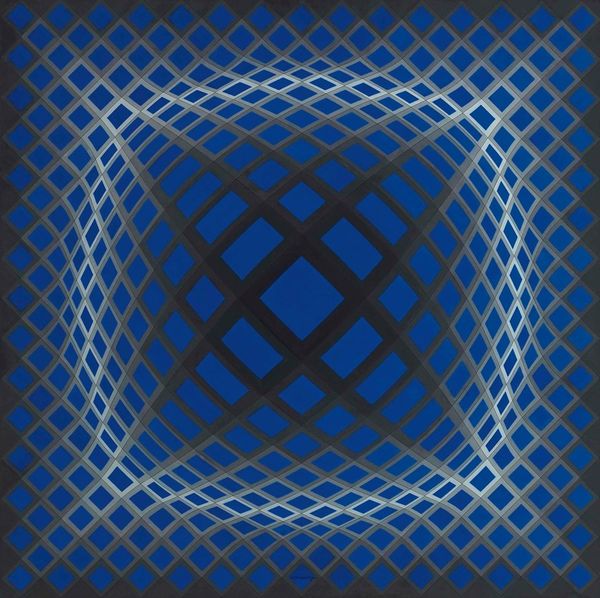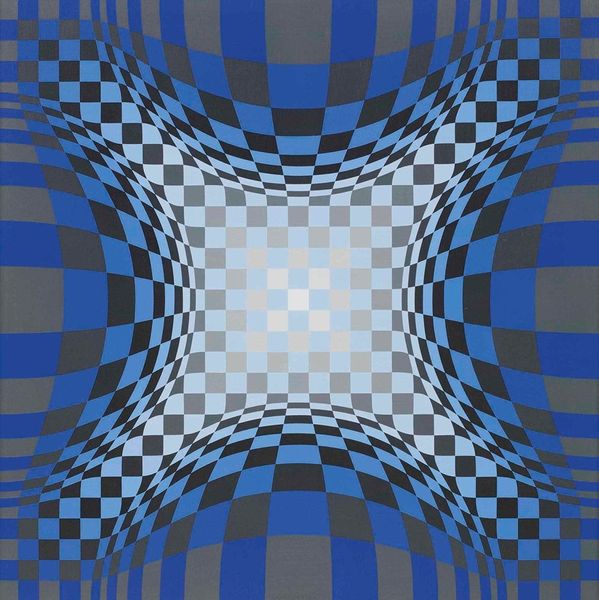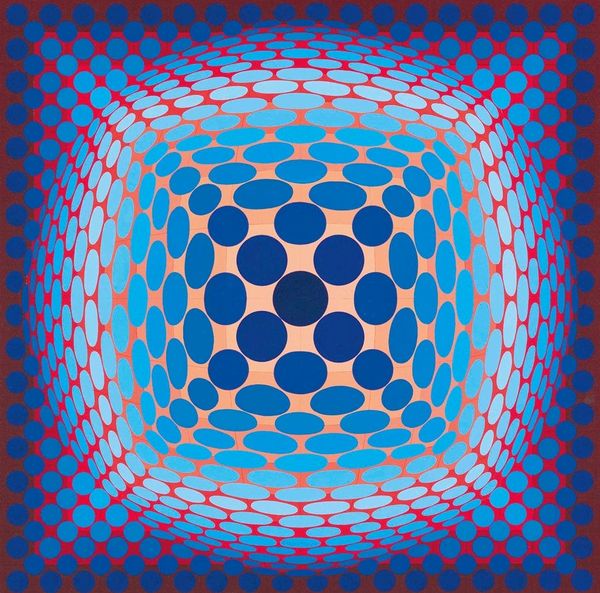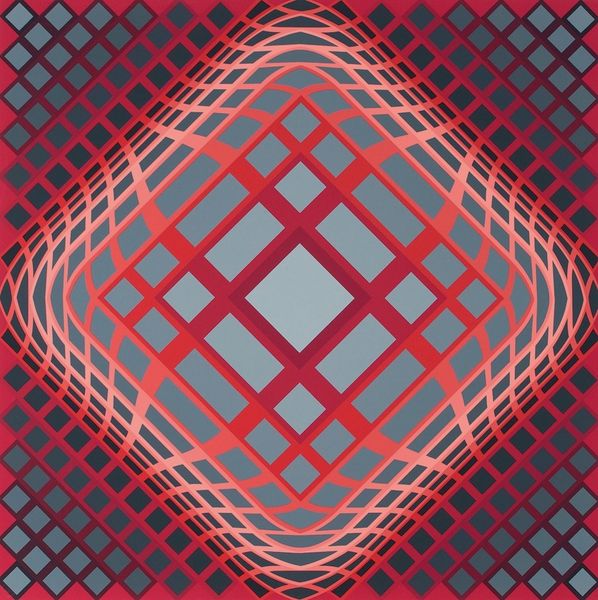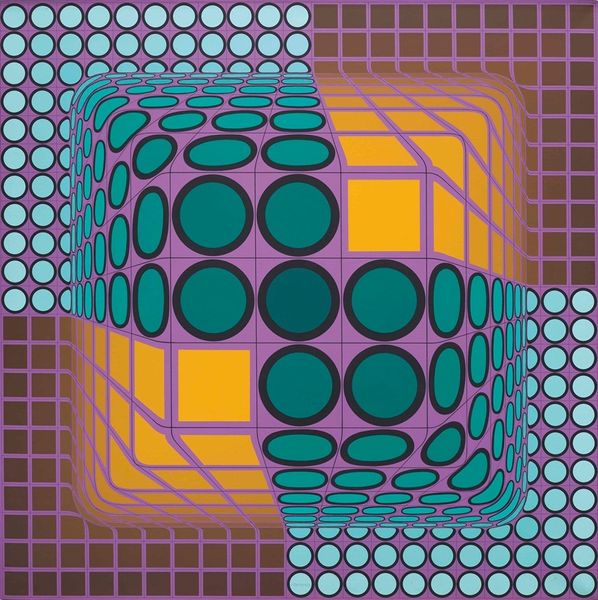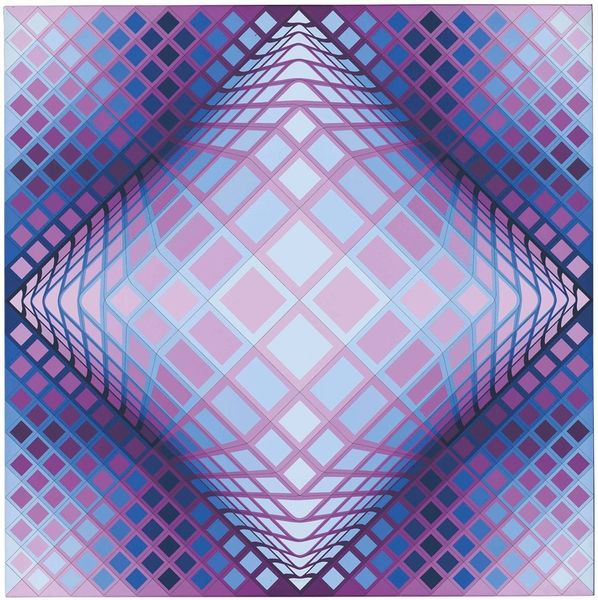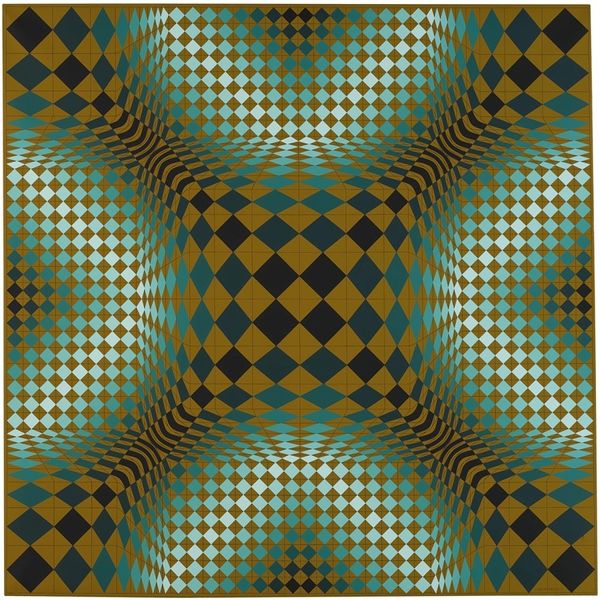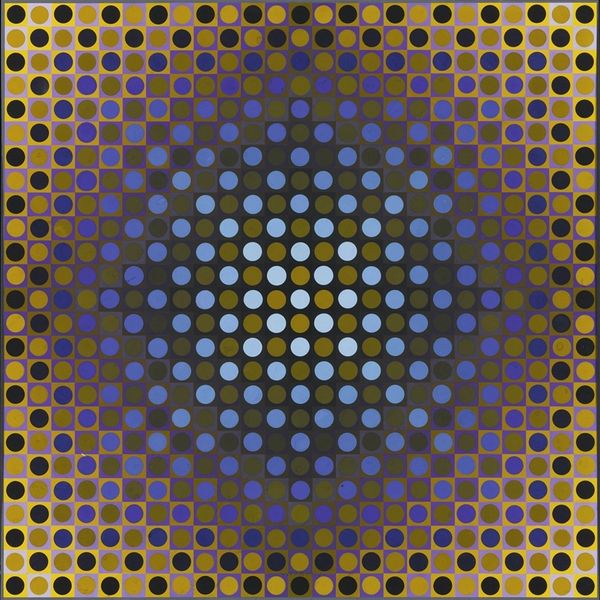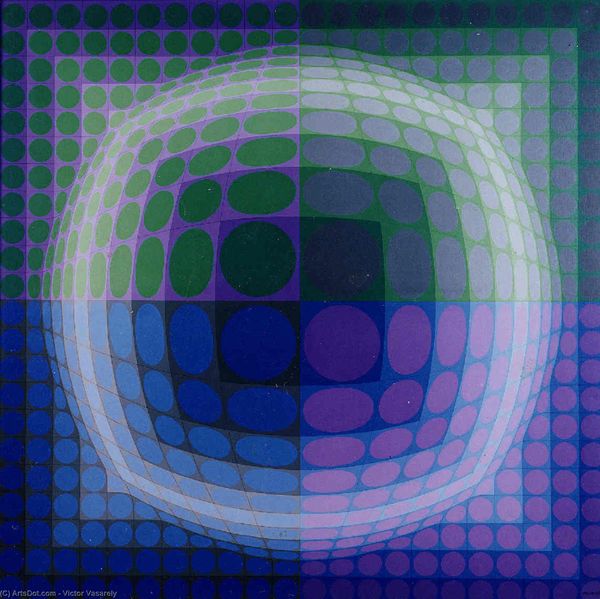
acrylic-paint
#
op-art
#
acrylic-paint
#
form
#
geometric
#
abstraction
#
line
#
modernism
#
hard-edge-painting
Copyright: Modern Artists: Artvee
Curator: Standing before us is Victor Vasarely's "Pictor," an acrylic on canvas completed between 1979 and 1980. Editor: My first impression is how the color, varying shades of blue and purple, seems to pull the viewer into some strange dimension, like an impossible room constructed of tessellated squares. It’s unsettling, in a fascinating way. Curator: The very essence of Vasarely's Op Art lies within this play of perception. The geometric abstraction creates a distinct optical illusion through calculated arrangements of color and shape. Editor: Indeed, but what statement, if any, does such abstraction make during this historical moment? We see an interesting tension emerging amid cold war anxiety: while geometric abstraction in the West celebrates science, rational thought, and technological advances, many critics considered this type of art to be a type of capitalist formalist trick. How should this legacy impact a viewer today? Curator: Considering only the painting itself, the strict geometry, repeated shapes, and hard-edged forms lend a mathematical precision to the composition. Vasarely presents an exercise in pure form, color, and spatial manipulation. Semiotically, the squares become signifiers divorced from conventional referents, creating instead an abstract visual language. Editor: Perhaps... and perhaps those signs allude to ideas regarding conformity or the pervasiveness of technology in the late twentieth century. Does this suggest societal constraints on freedom and individuality, or the illusory promise of boundless progress through a grid of digital technology? Curator: I find your line of questioning fascinating. However, through my formalist lens, I would argue it’s more useful to think about the painting as a study of form. Note how the gradation in tones suggests both depth and flatness, undermining any stable reading of the surface. Editor: All readings are unstable! This work becomes interesting when one starts to acknowledge not only color and shape, but how society changes across both time and geography. Curator: I appreciate how you have connected socio-cultural contexts and asked questions that resonate strongly today. It underscores the importance of remaining conscious of our history, while you helped me remember that line, shape, and color can still create exciting things in visual space.
Comments
No comments
Be the first to comment and join the conversation on the ultimate creative platform.
